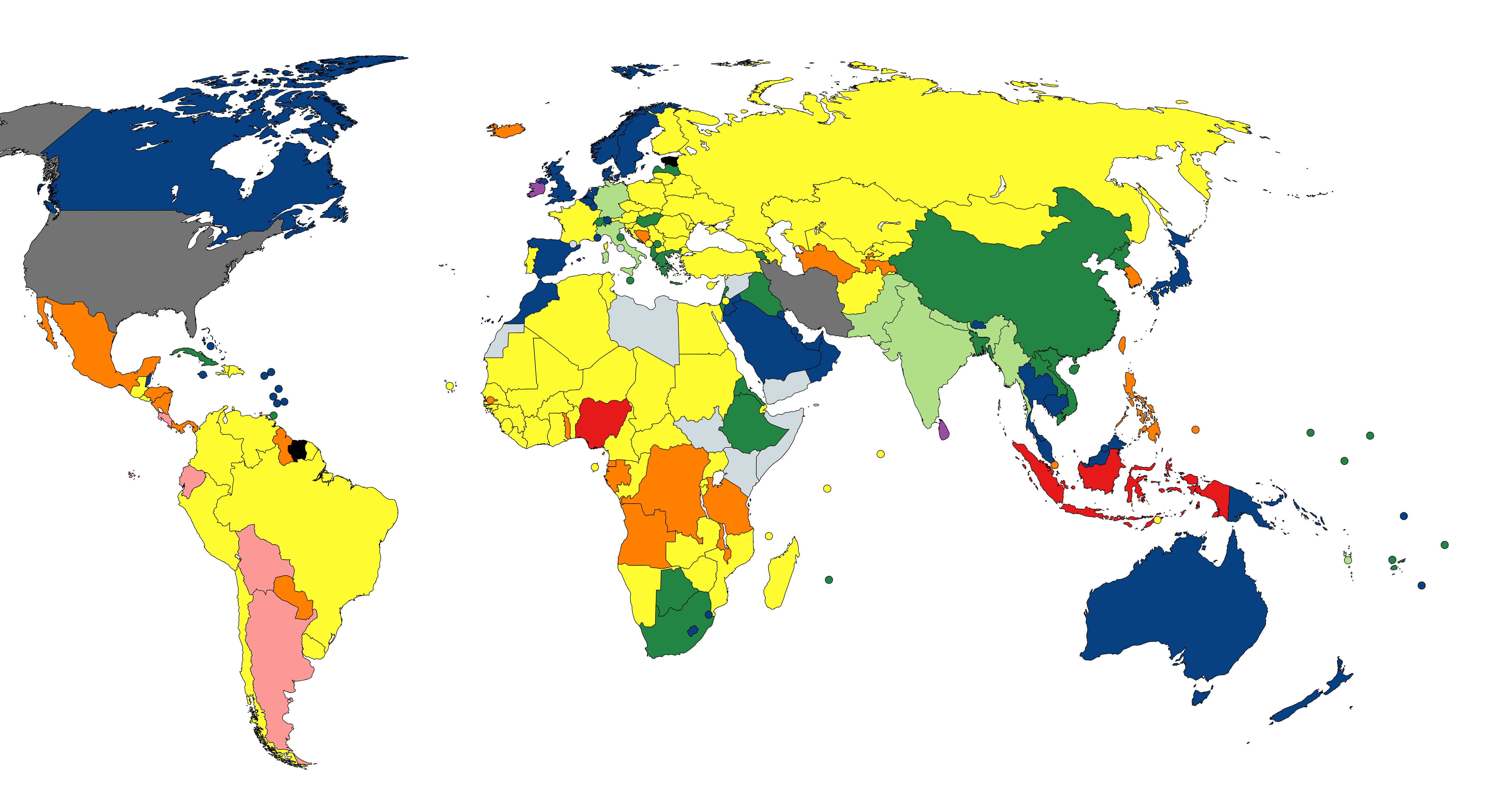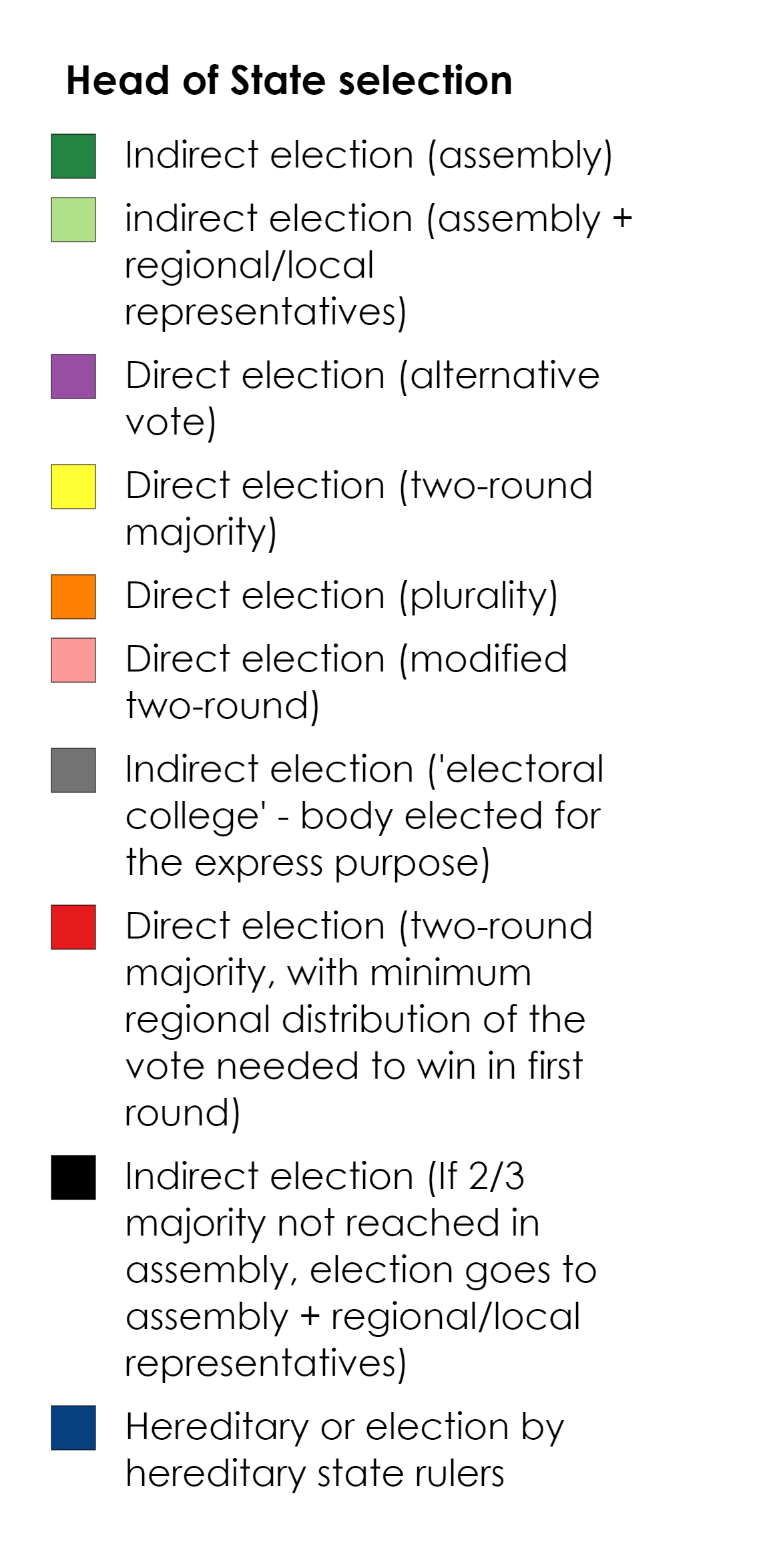Blurb

Download high resolution map

Download image |
Head of State Selection process: Explanation
- Hereditary or election by hereditary state rulers: Identity of the head of state is determined through some form of hereditary succession, or election by state rulers who are themselves determined through hereditary succession.
- Indirect election (assembly): The head of state is elected by members of the assembly. In some cases, a supermajority is absolutely required (e.g. Ethiopia); in all other cases a majority is sufficient in the final round. In Lebanon, a supermajority minimum turnout is required, which means the minority can veto by staying away from the vote.
- Indirect election (assembly + regional/local representatives): The head of state is elected by the combination of assembly members and local and/or federal unit assemblies or their delegates.
- Indirect election (assembly + regional/local representatives): The head of state is elected by the Assembly, but if no candidate can get the support of a two-thirds majority, the election goes to an electoral body made up of the combination of assembly members and local and/or federal unit assemblies or their delegates.
- Indirect election ('electoral college' - body elected for the express purpose): The head of state is elected by a directly-elected body whose primary or sole purpose is selection of the head of state.
- Direct election (plurality): The head of state is directly elected; the candidate with most votes is elected. This includes countries with ‘fused’ legislative-executive elections where the leader of the party with the most votes, sometimes subject to two rounds, becomes president (e.g. Angola).
- Direct election (majority runoff with minimum regional distribution of the vote needed to win in first round): The head of state is directly elected. A candidate with a majority (50%+1) in the first round, as well as a certain minimum percentage of the vote in a certain number of regions, is elected; if no candidate receives a majority of votes in the first round, a decisive second round is held between first- and second-placed candidates.
- Direct election (majority runoff): The head of state is directly elected. A candidate with a majority (50%+1) in the first round is elected; if no candidate receives a majority of votes in the first round, a decisive second round is held between first- and second-placed candidates.
- Direct election (modified two-round): The head of state is directly elected. A candidate with a predefined proportion of the vote (e.g. 40%; 45% or 40% with 10% advantage) in the first round is elected; if no candidate is elected in the first round, a decisive second round is held between first- and second-placed candidates.
- Direct election (alternative vote): Voters have ranked ballot. If no candidate has more than half of first-preference votes, the lowest-voted candidate is eliminated and has votes redistributed according to preferences expressed on ballots. This is repeated until some candidate has a majority (50%+1) of the votes, and that candidate is elected.
|



